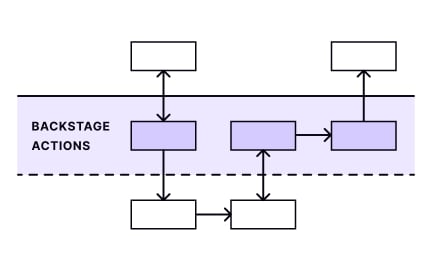DevOps Practices
DevOps is a methodology that integrates development and operations to streamline workflows, improve deployment speed, and reduce errors in product delivery.
What are DevOps Practices?
DevOps practices combine software development and IT operations through cultural collaboration, process automation, and shared responsibility for delivering reliable, high-quality software quickly and efficiently. It breaks down traditional silos between development and operations teams, creating integrated workflows that enable continuous integration, delivery, and deployment while maintaining system reliability and security.
This approach encompasses continuous integration/continuous deployment (CI/CD), infrastructure automation, monitoring and observability, collaboration tools, and cultural practices that enable rapid, reliable software delivery at scale.
DevOps Practices in Product Development
Product managers work with DevOps teams to ensure product delivery capabilities support business objectives while maintaining quality and reliability standards that meet customer expectations.
Release planning and deployment strategy
DevOps practices enable flexible release strategies including feature flags, canary deployments, and blue-green deployments that allow product teams to manage risk while delivering features quickly to users.
Performance monitoring and user experience optimization
DevOps monitoring provides real-time visibility into product performance, user behavior, and system health enabling rapid response to issues that affect customer experience.
Scalability planning and infrastructure management
DevOps automation enables products to scale efficiently with user growth through infrastructure as code and automated scaling that handles demand spikes without manual intervention.
Quality assurance and testing integration
DevOps pipelines include automated testing at multiple levels ensuring product quality while enabling rapid delivery cycles that don't compromise reliability.
Core DevOps Practice Areas
Continuous Integration and Continuous Deployment (CI/CD):
- Automated builds: Every code change triggers automated compilation and packaging processes
- Automated testing: Comprehensive test suites run automatically ensuring code quality
- Deployment automation: Streamlined processes for promoting code through environments to production
- Release orchestration: Coordinated deployments across multiple services and systems
Infrastructure as Code (IaC):
- Environment provisioning: Automated creation of consistent development, testing, and production environments
- Configuration management: Systematic management of system configurations and dependencies
- Version control: Infrastructure changes tracked and managed like application code
- Disaster recovery: Automated backup and recovery processes for critical systems
Monitoring and Observability:
- Application performance monitoring: Real-time tracking of system performance and user experience
- Log aggregation: Centralized collection and analysis of system and application logs
- Metrics and alerting: Proactive notification of system issues and performance degradation
- Distributed tracing: Understanding request flows through complex microservice architectures
Security and Compliance:
- Security automation: Integrated security scanning and vulnerability assessment
- Compliance monitoring: Automated checking of regulatory and policy compliance
- Access management: Controlled and audited access to systems and data
- Secret management: Secure storage and distribution of passwords and API keys
Recommended resources
Courses

Accessibility Foundations

Wireframing







